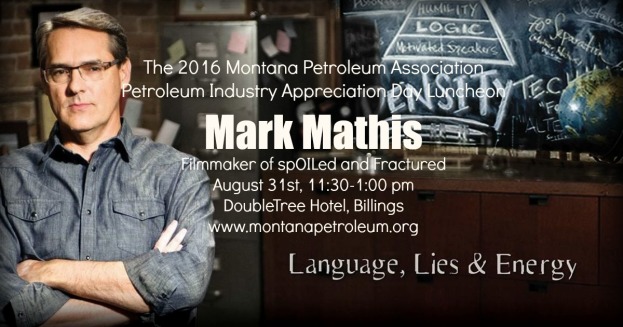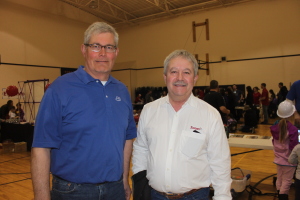 By: Jessica Sena
By: Jessica Sena
If you haven’t heard of the Dakota Access pipeline protest across the North Dakota border, now’s the time to pay attention.
The project, a 30-inch-diameter pipeline owned by Energy Transfer Partners that would move up to 570,000 barrels per day from the Bakken oil fields to Patoka, Illinois, was scheduled to be operational by the end of the year. The pipeline operator purchased voluntary easement agreements on 100% of the properties along the route in North Dakota and 99% of the properties across the entire four-state route. All permits, including approval by the U.S. Army Corps of Engineers in July, have also been obtained by the company; however, protests have stopped construction in its tracks.
Yesterday, two decisions marked a precedent setting action by the federal government, with respect to land use and lawful development. Judge James Boasberg of the U.S. District Court denied the South Dakota Standing Rock Sioux Tribe’s lawsuit to block pipeline construction, siting a lack of evidence that building the pipeline would harm the Tribe.
The Departments of Justice, the Interior and the Army then immediately announced an indefinite suspension of pipeline construction to reassess cultural impacts to what the Tribe calls “sacred ground”. The pipeline route does not cross the Standing Rock reservation, however, the Tribe fears harm to Lake Oahe on the Missouri River in North and South Dakota.
Consultation with GeoEngineers, a subcontractor to Dakota Access, provided information which indicates the boring process would not be of a magnitude to impact natural features, cultural resource features or above ground structures. The crossing at Lake Oahe will be placed approximately 140-210 feet below the ground surface and approximately 92 feet below the bottom of Lake Oahe. The pipeline would utilize the best available safety and monitoring technology.
The Dakota Access team held 154 meetings with local elected officials and community organizations in North Dakota since the project was announced last summer. Over the course of the year-long approval process with the North Dakota Public Service Commission, the Tribe did not once appear to voice concerns over the impacts of the pipeline’s route.
Protests arose after the project was approved and easements secured, and have since become violent and unlawful. Construction workers (100% of which are union per the project agreement) have needed protection by security guards and law enforcement. National Guardsmen have also been alerted by the North Dakota Governor to standby for support.
Allies of the Tribe in its protest have been extreme environmental groups, the Black Lives Matters movement, a handful of celebrities, and Green Party candidate for President, Jill Stein. Stein was among many seen vandalizing construction equipment last week, for which a warrant was issued for her arrest. Multiple arrests of protesters have been made along the pipeline route for trespassing and criminal mischief.
The suit filed by Earthjustice on behalf of the tribe states that, “the tribe relies on the waters of Lake Oahe for drinking water, irrigation, fishing and recreation and to carry out cultural and religious practices. The public water supply for the tribe, which provides drinking water for thousands of people, is located a few miles downstream of the proposed pipeline crossing route.” It goes on to say, “the cultural and religious significance of these waters cannot be overstated. Construction of the pipeline … and building and burying the pipeline would destroy burial grounds, sacred sites, and historically significant areas on either side of Lake Oahe.”
In the federal agencies’ announcement to halt construction on federal land and beneath Lake Oahe, it was said the conflict highlights the need to consider “nationwide reform with respect to considering tribes’ views on these types of infrastructure projects.” “Reform” is the word that should have everyone concerned.
In a 1988 case, Lyng v. Northwest Indian Cemetery Protective Association, wherein The U.S. Forest Service attempted to complete a logging road through the Six Rivers National Forest in northwestern California, despite the religious use of the area by three Indian tribes, the Supreme Court ruled against the Tribes.
By ruling in favor of development, the Court avoided a situation in which tribes could guarantee the nonuse of significant portions of government land. The Court, reportedly, realized that the veto power requested by the tribes “could easily require de facto beneficial ownership of some rather spacious tracts of public property,” and it accordingly acted to prevent such an occurrence.
Following the decision, the Supreme Court stated, “however much we might wish that it were otherwise, government simply could not operate if it were required to satisfy every citizen’s religious needs and desires.”
And here we are, now faced with the very question of satisfying desires of some people over the laws which govern all people. The federal government has gone against its own agencies and judges’ lawful determinations to allow the heavily regulated construction of a $3.7 billion dollar pipeline which would create between 8,000-12,000 construction jobs and millions in beneficial tax revenue to the states in which it operates.
It’s worth noting that there are more than 2 million miles of pipeline traversing the country. Seventy percent of domestic crude is transported by pipeline, the safest means of moving oil and natural gas according to the federal government’s own Pipeline and Hazardous Materials Safety Administration.
Those resources, moved by pipeline, provide the necessary living essentials to all people, regardless of their beliefs or support. Every one of the protestors along the Dakota Access pipeline is a consumer of petroleum products, and benefits from the monies which result from pipeline infrastructure.
This decision, perhaps a Keystone XL sequel, will set the stage for what appears to be a frightening and uncertain future. If unlawful protests can reverse lawful permits, then the rule of law itself as it pertains to pipelines, permits, people and public lands as a whole, is imperiled.










 U.S. Energy Information Administration
U.S. Energy Information Administration
 U.S. Energy Information Administration
U.S. Energy Information Administration







